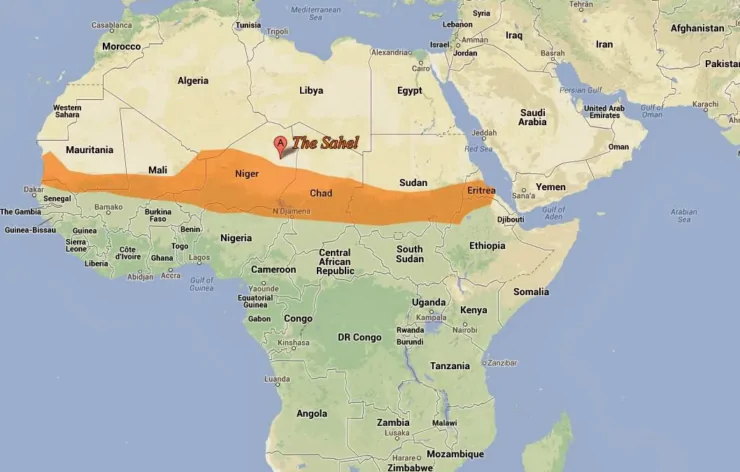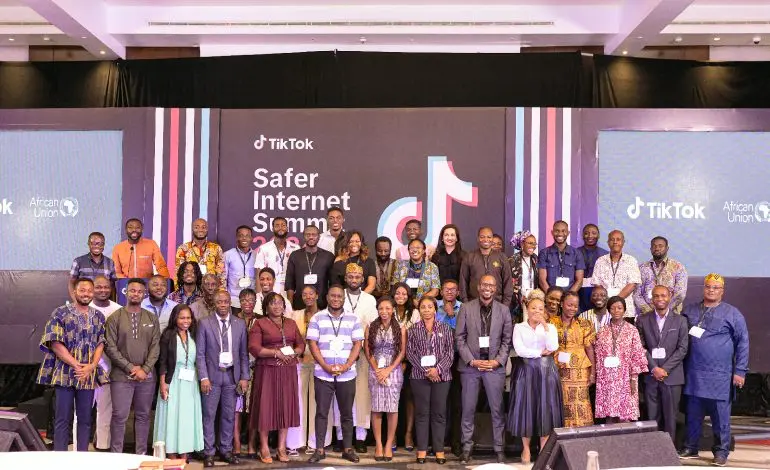Pavel Rastopshin, managing director at « Zyfra »: “We develop industrial digitalization technologies

1 – Tell us about Zyfra (when was it born? who created it? what are its activities? its areas of definition? etc).
Zyfra started its operations in September 2017 in Helsinki, Finland. We develop industrial digitalization technologies for machinery, metallurgy, mining, and oil & gas. The solutions include predictive analytics and data analysis, tech process optimization, automatic dispatch systems, autonomous dump trucks, and teleoperated equipment.
In 2018, Zyfra acquired Russia’s VIST Group, one of the global leaders in development and implementation of technologies for miningdigitalization. Through the acquisition of this asset, we are planning to occupy a significant share of the global intelligent mining market.
VIST Group has been successful in the mining industry for 30+ years with 80+ mines using our products. The main solution developed by VIST Group is a mine fleet management system, which collects and manages real-time information from mining equipment. Where required, special sensors are installed on excavators, mining trucks, dozers, and other equipment. After every load and unload, drivers can obtain the best route to the next location. All relevant information is available to excavator operators and truck drivers on the smart panels in their cabins, to the control room operators, and on mobile devices as per the mine’s choice.
The dynamic optimization module can distribute haul trucks along routes based on a sophisticated multi-criteria optimization factor. The system also allows shift changes, break times, refueling, etc, to be optimized in real-time and haul trucks’ loading parameters to be managed and monitored.
Last year, the pilot project was trialed on 130-ton BELAZ-7513R autonomous mining dump trucks at Russia’s largest coal producer SUEK’s open-pit mine. Robotic dump trucks are part of the Zyfra Intelligent Mine system aimed at providing efficient, safe, completely unmanned mining technologies based on robotics, industrial artificial intelligence (AI), and the internet of things (IoT).
Robotic dump trucks allow for a significant increase in freight transport production rates (up to 30%) thanks to a reduction in non-technological downtimes related to human factors (shift changes, lunchtime, etc.). The average speed of robotic dump trucks also increases thus increasing the amount of hauling per shift as well (by approximately 20%).
2 – What is the current situation in the mining industry in Africa and globally?
The application of digital technologies in mining operations has been discussed both in professional community and our company for quite some time already.
Digital transformation is at a breathtaking pace in the global industry. Its leaders are car-making conglomerates that actively develop automation and robotic automation, the Industrial Internet of Things, big data collection and analysis, digital doppelgangers, predictive analytics systems, and many other technologies. The mining industry is much more conservative since with consistently large amounts of production the primary focus here is the safety of operations. And, as you remember, the rapidity of changes in any system is inversely related to its stability.
However, mining enterprises all across the world have already turned to digitalization as they started receiving reports on reduced labor efficiency. Their tasks in terms of the output volume remain the same, but many producing fields have been exhausted, the mined ore is poorer in terms of metal content, and the access to new ore bodies is becoming more complicated. Before long, the phrase ‘extreme extraction’ will no longer surprise experts in the industry.
While working on our projects, we have marked out the digital technologies as those allowing people, systems, and machines to interact instantaneously, to carry out immediate analysis or sophisticated calculations within the framework of conventional processes, or those allowing us to search for hidden interconnections in the processes being observed. Such understanding has enabled us to determine the essence of the changes being implemented and to calculate the volume of projects being carried out more precisely.
We have agreed that digital technologies should eventually allow for a reduction in the usage of resources for execution of the production process, lower the number of errors in routine processes or help people with complex problem solving within a limited period. If they won’t allow for doing something of the above listed then implementing them is not worth the trouble.
If we look at the stages of digital transformation then at the preparative level, we see sensors, diagnostic systems, we already get approximate results, and in some cases – diagnostics of technological systems. Gradually, this turns into system monitoring of equipment which improves performance. The top level is robotic systems, autonomous drilling rigs. These are ‘unmanned’ technologies.
That being said, I’d like to add that ‘unmanned’ technologies are hardly aimed at freeing the production process from human involvement but at creating a new organization, where people can handle hard and monotonous work in hazardous and harmful conditions remotely. In addition, there is a significant deficiency of dump truck drivers in the market, so the introduction of robotized dump trucks would allow solving this problem.
Not all the benefits are yet obvious, but, for example, we are confident that new technologies will definitely allow reducing the number of workers who have to endure hazardous jobs. Hence, the number of accidents will decrease as well; there will be no shutdowns or forced downtime caused by them. As a matter of fact, increasing labor safety and economic efficiency are two parallel processes.
I will repeat myself: mining is considered to be one of the most conservative industry sectors with rarely emerging and rather slowly implemented new technologies. One should scarcely expect a technological breakthrough in this field in the nearest future, yet stepping up the cost-effectiveness of field development is already quite possible now. I’ll use Russia as an example. The need for serious changes in this industry sector is long-standing, and businesses have realized that. In the Urals, an old industrial region where ore mining and processing was once the backbone of the economy, but now only a handful of the rich deposits remain, the old pits have been mined out. We say, ‘and now the pit is deep where the mount was steep’. Today, industrialists are forced to develop deposits that no one would even try to tackle 50 years ago and which contain a very low concentration of useful components, and try not to lose money in doing so. But the depths of the earth are becoming increasingly poor, which is why the search for cost reduction options is the most important business task.
In our experience, the efficiency of digitalization at a mining enterprise means a production increase of 15% and a cost reduction of up to 15%. Digital solutions should be paid off within six months or a year.
3 – Does Zyfra have representative offices in the world and particularly in Africa? If so, where are they?
We work in more than 20 countries in Latin America, Europe, South and Southeast Asia. In 2020, we opened an office in Pretoria and are currently looking for more partners in South Africa, Namibia, Botswana, Lesotho, and Ghana.
We hope to see first mining digitalization projects implemented in South Africa, Namibia, Botswana, Lesotho, and Ghana by 2021. So, we are looking for a local partner in each country with the knowledge of market trends and the industry itself. Ideally, our task is to help the partner with the first implementation and for him to do subsequent implementations himself.
This is one of the benefits of cooperating with Zyfra: we are interested in the development of local companies’ competence. We spend lots of resources on improving competence among our partners. We have conducted various training, etc. Furthermore, we are ready to work together with our partners in third countries.
The digitalization level at mining enterprises in Africa can differ significantly. Some are introducing in-process monitoring systems, while others are already working out the introduction of robotic technologies. Due to Zyfra’s wide range of solutions and thirty-year experience of introducing solutions for increasing the safety and efficiency of mining operations, we understand that the digitalization strategy is not only individual for each company but also needs to account for a stage-by-stage approach to the introduction of technologies with protection of investments made at each stage.
In 2019, Zyfra completed the 80th installation of its open mine fleet management system, which improves efficiency and safety in open-pit mining based on the individual requirements of the mine. The installation took place at the Shougang Hierro Peru open-pit mine of Cosapi Mineria, a Latin American leader in mining.
We have also successfully launched several mining digitalization projects in Russia and India. In Russia, we have deployed an autonomous drill rig, as well as a smart excavator with a machine vision system.
In India, the Intelligent Mine project is being implemented by the largest Indian coal mine operator Thriveni Earthmovers at the coal Pakri Barvadi mine of NTPC, the leading energy corporation in India. The project is more than 60% complete. From January to March, a wireless communication system and a system for high-precision positioning of the mining transport complex were deployed at the mine along with the installation of software. At the end of March, we switched to the remote implementation of the full software and hardware complex. For us, this is the first remote implementation of a project of this kind. We realized that teamwork was more important than ever and that with the support of the customer, we could do 75% of the remaining work remotely, thus reaching 90% completion of the entire implementation.
4 – What is your strategy for imposing yourself on the market to remain among the best?
Our strategy consists of two pillars. The first is the first-mover advantage – when the first significant company moves into a new market. The second is constant improvement of our digital technological expertise based on the fact that we have some clients we’ve already come a long way with. IT is a very strong sector in Russia, so we are reinventing ourselves in terms of new products in the sector-specific appliances that the existing actors of the automation market do not yet have.
The biggest companies in the mining industry are more concerned with the efficiency of the entire production chain, not its separate elements. Our solutions facilitate the efficiency improvement of the entire production chain rather than its separate elements through the ‘Mine to Mill’ principle, which will allow integrating different data into one digital layer and will result in the optimization of the processes. We move straight toward platform solutions where one can implement digital solutions at any site where the maximum effect is required.
Integration allows controlling the entire production chain: from drilling to mineral processing. At the same time, the same control processes are implemented not only in individual workshops but throughout the whole enterprise.
Secondly, we are independent from the original equipment manufacturer. The equipment can be installed on dump trucks, loaders, and drilling rigs of different manufacturers. This way, we solve the complex problem of unmanned work in the open pits, not only its elements (for example, only transportation).
5 – What are your main challenges?
I would highlight two problems – lack of knowledge and indecisiveness. It’s easier to buy machines than to change operational processes by implementing digital technologies. There’s a lack of sharing of best practices. It’s not clear what to do. If you’ve been dealing only with production your whole life and not digital technologies, you may simply not know about them. There’s a lack of general knowledge about the capabilities of digital technologies in production. As for indecisiveness, we see the conservatism of a number of enterprises, plus the resistance of the management which sometimes doesn’t want the plant’s processes to become more transparent and thus for their abuses or deficiencies to become apparent.
Another problem lies inside enterprises. It is the lack of data. Ideally, you need digitalized data for a six month period. According to our calculations, three quarters of Russia’s total pool of 800 thousand machines are unequipped with computer numerical control, which complicates connecting them to industrial monitoring systems.
There have always been those who resist technological progress in one form or another. It’s difficult for people to accept that a ‘soulless’ piece of hardware could adapt to a sophisticated production process within a relatively short time at a level comparable to that of a qualified operator. However, this is true for a whole range of tasks (and can be completely untrue for others). Sometimes it gets absurd: production engineers criticize the applicability of AI by arguing that artificial intelligence yields the same recommendations they would have provided themselves. They are not taken aback by the fact that a system that has been learning for just a few weeks at best can give the same recommendations as specialists with many years of experience.
Some manufacturers say: ‘Let’s try digital technologies for some secondary process, and then we’ll see.’ But it is impossible to note a significant effect in a small production with minimal economic life. Also, we often see a lack of knowledge and indecisiveness. It’s easier to buy machines than to change operational processes by implementing digital technologies.
Digitalization is a complex process. So the main challenge is that IT specialists do not understand production while production workers do not understand IT. This is why our business is focused on building a dialogue between the actual production and information technologies. It’s complicated.
I will repeat myself again: people should not be afraid of robots. Highly qualified personnel has always been and will always be sought-after at mining enterprises. The labor market is suffering a shortage of highly skilled specialists. And the structure of personnel in mining companies is changing. Even now, some of them have created female crews of high-capacity vehicle drivers, which used to be completely unheard-of. The reason is that working conditions are changing both in physical and organizational sense. Zyfra promotes it – and so does the digital approach. On the one hand, working at a mining enterprise becomes less painstaking, with fewer man-hours required per unit of ore produced, but on the other hand, the level of personnel competence will certainly keep growing.
The key risks can be divided into several categories. The first are technical and technological risks. They arise if the introduction of technology does not achieve the desired effect. For instance, it is impossible to work out every scenario under field test site conditions – e.g. for the Far North. None of the equipment manufacturers can currently predict how the technology will behave in difficult conditions such as arctic cold of Siberia, the Far North with its ice roads, snowfalls, etc.
Secondly, mining companies expect the same availability ratio for autonomous equipment as for regular equipment. But it depends on the least reliable component. If a radar or a lidar has a life cycle of 2–3 years, the entire robotic complex will require replacement or repairs in two years. Currently, companies have no detailed understanding of these least reliable components and how they will reduce the readiness of a dump truck over its whole working life cycle.
The third risk is related to accidents and liability for them. Nowadays, if a company buys a truck, it is the company’s responsibility. If some module or element responsible for robotic automation breaks down, it is unclear who is liable for it. Ideally, each risk should be insured, i.e. a robot should come with a definitive certificate of insurance.
6 – We are in a world threatened by the Coronavirus pandemic. Does Zyfra have an anti-COVID-19 solution to treat or prevent the spread of coronavirus at production sites? If it does, what is it?
Earlier this year, we have presented our new product – AI ANTI-COVID-19 – for industrial enterprises.
AI ANTI-COVID-19 is a comprehensive system for the prevention of the spread of COVID-19 at industrial enterprises. Video analytics and special bracelets connected to smartphones allow controlling whether the production personnel wears masks and gloves, the body temperature of employees and the distance between them. The control is exercised not only over the employees of the enterprise but over visitors as well. The system assesses the compliance with sanitary standards, the violation dynamics and determines the security index on a scale from one to five. It can be given to either a certain shop or area or the enterprise in general.
Each employee is assigned a digital profile with records of all of their contacts and movements, as well as their duration. Hence, in the event that an employee is found to be infected with COVID-19, the system gives recommendations regarding which employees should be isolated in order to prevent the spread of the infection based on an analysis of the person’s digital profile. The number and duration of contacts in a given period are taken into account, and all those who have come into contact are divided into 3 groups – red, orange, and yellow – depending on the risk of infection.
Right now, the key risk for industrial enterprises is the shutdown of workshops, sites, and open-pit coal mines due to mass infections of personnel or mandatory quarantine. Our solution helps reduce these risks by constantly monitoring the observance of social distancing, selectively isolating employees, and identifying the potential infection chains.
After the epidemiological situation is stabilized, the AI-COVID19-Control system can be transformed into a full-featured industrial safety system based on video analytics technology and personnel positioning. For example, for monitoring the wearing of hardhats and other safety equipment and for controlling the movement of personnel in hazardous areas.
AI-COVID19-Control can be used at machine-building, mining, and oil & gas enterprises, as well as a few other types of enterprises, including those working on a rotation basis.
























